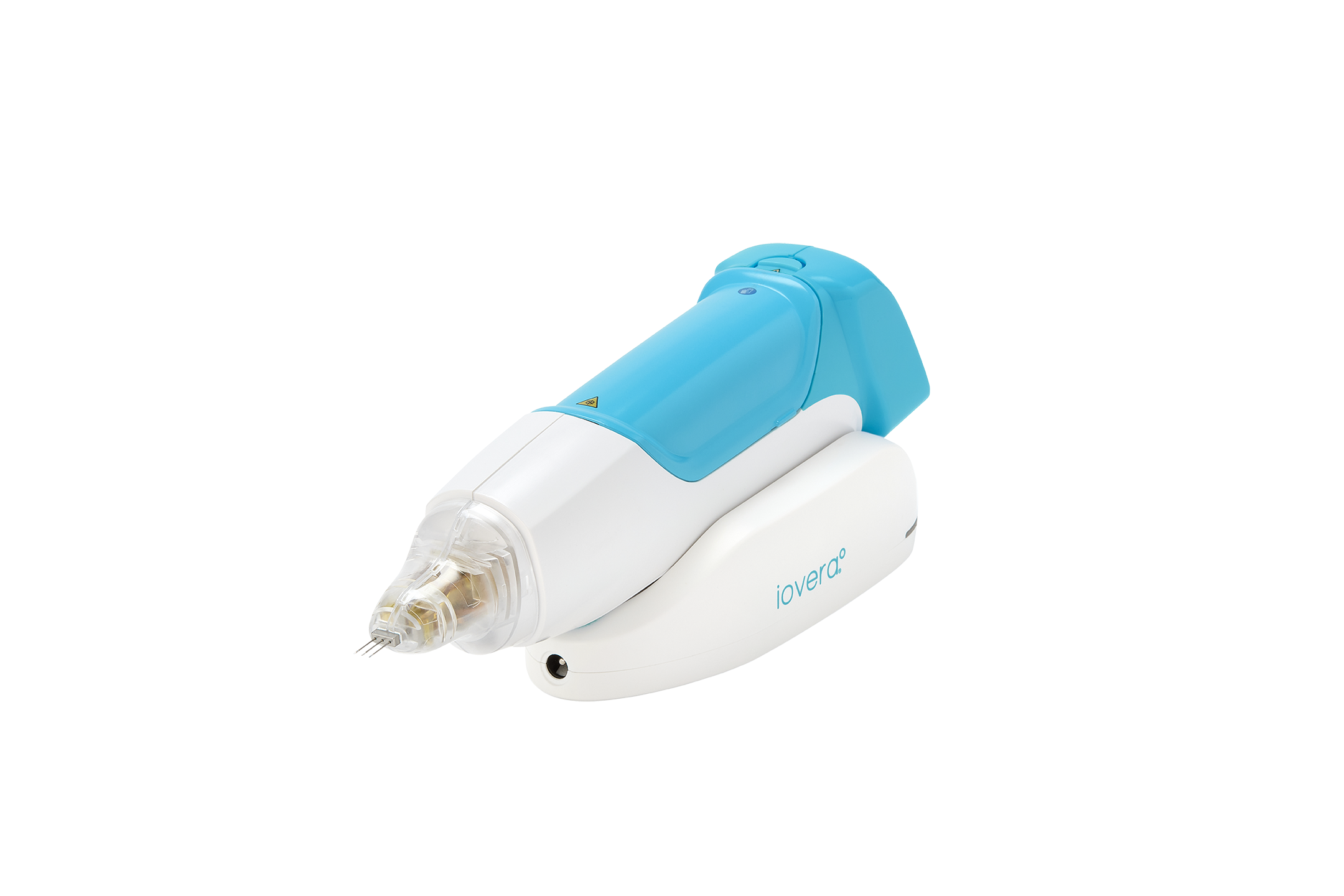Publishing in Nature, University of North Carolina School of Medicine researchers and colleagues discovered a pain control pathway that links the cingulate cortex in the front of the brain, through the pons region of the brainstem, to cerebellum in the back of the brain.
Tag: pain
Diseño de opioides más seguros
En un estudio publicado en ACS Central Science, los investigadores han identificado una estrategia para diseñar opioides más seguros. Han demostrado que un opioide experimental, que se une a un sitio no convencional del receptor, suprime el dolor en modelos animales con menos efectos secundarios, especialmente los vinculados a sobredosis fatales.
Designing safer opioids
In a study in ACS Central Science, researchers have identified a strategy to design safer opioids. They showed that an experimental opioid, which binds to an unconventional spot in the receptor, suppresses pain in animal models with fewer side effects — most notably those linked to fatal overdoses.
Painful truth about knee osteoarthritis: Why inactivity may be more complex than we think.
Knee osteoarthritis (OA) is a common cause of pain and joint stiffness. And while physical activity is known to ease symptoms, only one in 10 people regularly exercise.
MIRA Pharmaceuticals in Discussions with Memorial Sloan Kettering to Collaborate on Preclinical Cancer Pain Model Utilizing The Company’s Novel Oral Ketamine Analog
MIRA Pharmaceuticals, Inc. (NASDAQ: MIRA) (“MIRA” or the “Company”), a pre-clinical-stage pharmaceutical company focused on the treatment of neurologic and neuropsychiatric disorders, announced it is in advanced discussions with Memorial Sloan Kettering Cancer Center (MSK) to initiate a preclinical study evaluating MIRA’s novel oral ketamine analog, Ketamir-2, for the treatment of cancer-related pain and depression.
Turning the page on children’s pain
A new study from the University of South Australia shows how young children learn about the concept of pain through reading, and it’s helping to promote children’s empathy, emotional development, and understand socio-cultural norms.
Breakthrough in complex pain management
Complex Regional Pain Syndrome (CRPS) is a chronic and debilitating pain disorder, typically considered lifelong with limited treatment options. Now, groundbreaking research finds that early detection and effective treatment can lead to significant recovery within 18 months, offering hope to millions of people worldwide.
What women want: Female experiences to manage pelvic pain
A new study from the University of South Australia is putting people’s experiences of pelvic pain at the front of pain education to develop better pain management strategies and improved outcomes.
Acetaminophen May Be Less Heart-safe than Previously Thought
The common painkiller acetaminophen was found to alter proteins in the heart tissue when used regularly at moderate doses, according to a new study conducted in mice. Researchers will present their work this week at the American Physiology Summit in Long Beach, California.
REGENATIVE LABS’ LATEST PUBLISHED STUDY DEMONSTRATES THE SAFETY AND EFFICACY OF WHARTON’S JELLY CONNECTIVE TISSUE ALLOGRAFT FOR ROTATOR CUFF TEARS
Regenative Labs (Regenative), a leading HCT/P manufacturer, announces the publication of a study exhibiting the safety and efficacy of Wharton’s Jelly connective tissue allograft for rotator cuff tears.
Earlier retirement for people with chronic musculoskeletal pain
Frequent musculoskeletal pain is linked with an increased risk of exiting work and retiring earlier, according to a new study from the University of Portsmouth.
Dealing with Endometriosis
Endometriosis is a disease in which tissue similar to the lining of the uterus grows outside the uterus. It can cause severe pain in the pelvis, cystic growths in the ovaries and other organ spaces, and makes it harder to…
Social inequity is linked to lower use of epidural in childbirth
In a study of women in labor in the U. S., social inequity was associated with lower use of neuraxial analgesia — an epidural or spinal pain reliever– among non-Hispanic White women and, to a greater extent, among African American women, according to research at Columbia University Mailman School of Public Health and Columbia Vagelos College of Physicians and Surgeons (P&S).
Researchers uncover potential non-opioid treatment for chronic pain
Among the most difficult types of pain to alleviate is neuropathic pain, pain that is usually caused by damage to nerves in various body tissues, including skin, muscle and joints.
Brain changes behind pain sensitivity may affect older women more
A new study has found that the brain system enabling us to inhibit our own pain changes with age, and that gender-based differences in those changes may lead females to be more sensitive to moderate pain than males as older adults.
Our favorite bittersweet symphonies may help us deal better with physical pain
Researchers found that listening to our preferred music reduces pain intensity and unpleasantness, knowledge which could optimize music-based pain therapies
Opioid limits didn’t change surgery patients’ experience, study shows
Worries that surgery patients would have a tougher recovery if their doctors had to abide by a five-day limit on opioid pain medication prescriptions didn’t play out as expected, a new study finds.
Instead, patient-reported pain levels and satisfaction didn’t change at all for Michigan adults who had their appendix or gallbladder removed, a hernia repaired, a hysterectomy or other common operations after the state’s largest insurer put the limit in place, the study shows.
University Hospitals Researcher Receives NIH Award to Study Real-World Effectiveness of Music Therapy in Medical Care
A researcher with University Hospitals Connor Whole Health has received a fellowship award from the NIH to study the impact of music therapy on patients in the hospital.
UIC awarded $3M to study link between gut microbiome, pain in kidney transplant patients
Funded by NIH, the five-year study builds off a pilot study that pointed to an association between changes in the gut microbiome and pain that interferes with a person’s daily activities, a symptom that nearly half of kidney transplant patients experience.
U.S. Drug Overdose Deaths More Than Quadrupled from 1999 to 2020
Regardless of race, age, geography or urbanization, drug overdose deaths in the U.S. more than quadrupled from 1999 to 2020, causing 1,013,852 deaths. The rates increased 4.4 times from 6.9 per 100,000 in 1999 to 30 per 100,000 in 2020.
“Gates of Heaven” calcium channel drives oral cancer pain and growth
An essential protein that acts as a gatekeeper for calcium entering cells promotes the growth of oral cancer and generates pain, according to a new study published in Science Signaling led by researchers at NYU College of Dentistry.
Experiencing pain after a heart attack may predict long-term survival
Pain one year following a heart attack is common and linked with a higher likelihood of death within the next 8 years, finds new study in the Journal of the American Heart Association.

When Blood Is a New Alternative Medicine for Pain Relief at Chula Pain Clinic
Chula Medicine researchers have successfully published an article on the injection of patient’s own platelets rich plasma into the shoulder ligaments resulting in pain reduction, heal torn ligaments and restore torn muscles as an alternative to surgery while reducing the side effects of prolonged use of pain medications.
$1.5 Million Donation Supports Research on Effects of Psychedelic DMT on the Brain
A gift of $1.5 million from Eugene Jhong will help launch a new research program within the UC San Diego Psychedelic and Health Research Initiative to learn more about the biological and psychological effects of DMT in humans.
9 Warning Signs of a Heart Attack from Your Body a Month Before
The No. 1 cause of death in both men and women is heart disease. Heart attacks do not always happen like they do in the movies. Heart attacks can happen suddenly or silently, but warning signs may occur for many…
Study reveals unique molecular machinery of woman who can’t feel pain
The biology underpinning a rare genetic mutation that allows its carrier to live virtually pain-free, heal more rapidly and experience reduced anxiety and fear, has been uncovered by new research from UCL.
Interleukin-13 May Become Target for Treating Colon Pain
Article title: Sensitization of colonic nociceptors by IL-13 is dependent on JAK and p38 MAPK activity Authors: Katie H. Barker, James P. Higham, Luke A. Pattison, Iain P. Chessell, Fraser Welsh, Ewan St. J. Smith, David C. Bulmer From the…
Debunking pain myths could help teens recover faster
Whether it’s headaches, abdominal pain, or unrelenting joint soreness, up to a third of young people in Australia experience chronic pain. Now, a world-first study from the University of South Australia is providing valuable insights about how young people understand chronic pain, potentially helping thousands of sufferers to better manage their symptoms and long-term wellbeing.
CBD oil doesn’t reduce pain after common treatment for urinary stones
Treatment with an FDA-approved cannabidiol (CBD) oil product does not lower pain scores after surgical treatment and stent placement for patients with urinary stones, reports a clinical trial in the April issue of The Journal of Urology®, an Official Journal of the American Urological Association (AUA). The journal is published in the Lippincott portfolio by Wolters Kluwer.
Pain management pathway reduces use of opioids after urethral repair surgery
For men undergoing surgery to repair scarring in the urethra (urethroplasty), a new approach to pain management can reduce the need for strong opioid drugs without compromising pain control, reports a study in Urology Practice®, an Official Journal of the American Urological Association (AUA). The journal is published in the Lippincott portfolio by Wolters Kluwer.
Study Unravels Interplay Between Sleep, Chronic Pain and Spinal Cord Stimulation
Spinal cord stimulation uses low levels of electricity to relieve pain. A study is the first to measure this treatment’s effects on patients by gauging improvement in insomnia after spinal cord stimulation. Results showed a 30 percent or more improvement of both nighttime and daytime components of insomnia in 39.1 percent of study participants and a 30 percent or more improvement of daytime sleepiness in 28.1 percent of participants. Findings correlated with improvement in disability and depression and revealed associations with sleep and both pain and depression. Results will help clinicians gain a better understanding of the type of patient most likely to benefit from this treatment.
Nearly 1/3 of people with chronic pain turn to cannabis
According to a new study published in JAMA Network Open, almost a third of patients with chronic pain reported using cannabis to manage it.
Ultrasound Device for Pain Gets ‘Nod’ from Shark Tank and NIH Funding
A project using focused ultrasound is one of seven selected by the NIH, which also has received successful reviews from ABC’s “Shark Tank.” Researchers are developing a handheld probe to provide a noninvasive, non-opioid-based treatment for aggravated chronic pain for use in a physician’s office or potentially even at home. The device directs low-intensity ultrasound at the dorsal root ganglia – small bundles of nerves along the spine that control pain signals reaching the spinal cord – to provide means for precise treatment of back and leg pain.
Henry Ford Health Researchers Look at Steroids as Pain Control Alternative to Opioids
Henry Ford Health Orthopedic researchers looked at steroids as part of a multi-modal pain control regimen and an alternative to using opioids after outpatient knee replacement. The study won the 2022 American Association of Hip and Knee Surgeons Clinical Research Award.
Five Key Factors Affect Physical Activity in Multi-ethnic Older Adults
A study is the first to use a large range of instruments/ tools and include older adults from many ethnic groups to determine factors affecting their physical activity. Results showed that age, education, social network, pain and depression accounted for a statistically significant proportion of unique variance in physical activity in this diverse older population living independently. Those who reported lower physical activity tended to be older, have less years of education and reported lower social engagement, networking, resilience, mental health, self-health rating, and higher levels of depression, anxiety, pain, and body mass index compared to the moderate to high physical activity groups.
A new way to control pain after knee replacement surgery
Houston Methodist researchers present clinical evidence supporting the safety and efficacy of injecting pain medication directly into the tibia during knee replacement surgery for better postoperative pain management. The study revealed patients receiving a mixture of morphine and vancomycin injected into the shin bone have less pain post-surgery than those who received the infusion without morphine during surgery.

Reframe the pain: reducing needle anxiety in children
New research from the University of South Australia shows that children’s vaccination and needle fear can be lessened when nurses spend additional time supporting children in the vaccination process.
Pain, pain go away, help our children run and play
Like it or not, bumps and bruises are an unavoidable part of childhood. But while no parent wants their child to feel pain, teaching children about pain when they’re young can help them better understand and respond to pain when they’re older.
Bumblebees Appear to Feel Pain
New research by a team at Queen Mary University of London shows that bumblebees can modify their response to ‘noxious’ (painful) stimuli in a manner that is viewed in other animals as consistent with the ability to feel pain.

Hackensack University Medical Center Offers Innovative Nonsurgical Treatment for Knee Pain Nerve-Freezing Approach Reduces Need for Opioids
Hackensack University Medical Center physicians are now offering ioverao, a handheld device that is applied in the doctor’s office before knee replacement surgery to relieve postoperative knee pain, as well as to reduce the chronic pain of knee osteoarthritis. This cryotherapy treatment has been shown to decrease patients’ use of opioids and restore mobility by reducing stiffness and discomfort.
Brain imaging reveals how mindfulness program boosts pain regulation
Research at the University of Wisconsin–Madison’s Center for Healthy Minds has isolated the changes in pain-related brain activity that follow mindfulness training — pointing a way toward more targeted and precise pain treatment.
Histamine-producing gut bacteria can trigger chronic abdominal pain
The McMaster-Queen’s research team pinpointed the bacterium Klebsiella aerogenes as the key histamine producer by studying germ-free mice colonized with gut microbiota from patients with IBS. They also colonized some mice with gut microbiota from healthy volunteers as a control group.
The study found that the bacterium Klebsiella aerogenes converts dietary histidine, an essential amino acid present in animal and plant protein, into histamine, a known mediator of pain.
Building a Better Painkiller
On a quest to develop more effective pain medicines, scientists are studying how CBD inhibits pain-sensing neurons
Mindfulness Meditation Reduces Pain by Separating it from the Self
Mindfulness meditation is effective in reducing pain relief; UC San Diego study reveals the underlying neural circuitry.
Researchers discover how sound reduces pain in mice
An international team of scientists has identified the neural mechanisms through which sound blunts pain in mice. The findings, which could inform development of safer methods to treat pain, were published in Science.
Brain Differences in Pain Modulation in People with Self-Injury Behaviour
Researchers at Karolinska Institutet in Sweden might have found an explanation for why people with self-injury behaviour generally feel less pain than others.
Hispanic people with chest pain wait in ER on average 28 minutes longer than other people
Hispanic people who went to the emergency room (ER) reporting chest pain waited longer than non-Hispanic people to be treated, admitted to the hospital or discharged from the ER, according to preliminary research to be presented at the American Heart Association’s Quality of Care and Outcomes Research Scientific Sessions 2022.

AI Could Predict Ideal Chronic Pain Patients for Spinal Cord Stimulation
Spinal cord stimulation is a minimally invasive FDA-approved treatment to manage chronic pain such as back and neck pain. The ability to accurately predict which patients will benefit from this treatment in the long term is unclear and currently relies on the subjective experience of the implanting physician. A study is the first to use machine-learning algorithms in the neuromodulation field to predict long-term patient response to spinal cord stimulation.
Pain in the Neck? New Surgical Method Could be Game-changing
Anterior cervical discectomy and fusion is widely used to treat spinal disorders. The fusion involves placing a bone graft or “cage” and/or implants where the surgically removed damaged disc was originally located to stabilize and strengthen the area. The risk factors for cage migration are multifactorial and include patient, radiological characteristics, surgical techniques and postoperative factors. A study is the first to evaluate the effect of the range of motion, cage migration and penetration using variable angle screws and cervical spine models. The plate developed and tested by the researchers provided directional stability and excellent fusion, showing promising clinical outcomes for patients with degenerative cervical spine disease.
Senate Introduces Bill to Provide Full Chiropractic Coverage in Medicare
The U.S. Senate has introduced a bill, S. 4042, to modernize Medicare coverage and better meet the needs of today’s seniors by increasing access to services provided by doctors of chiropractic.